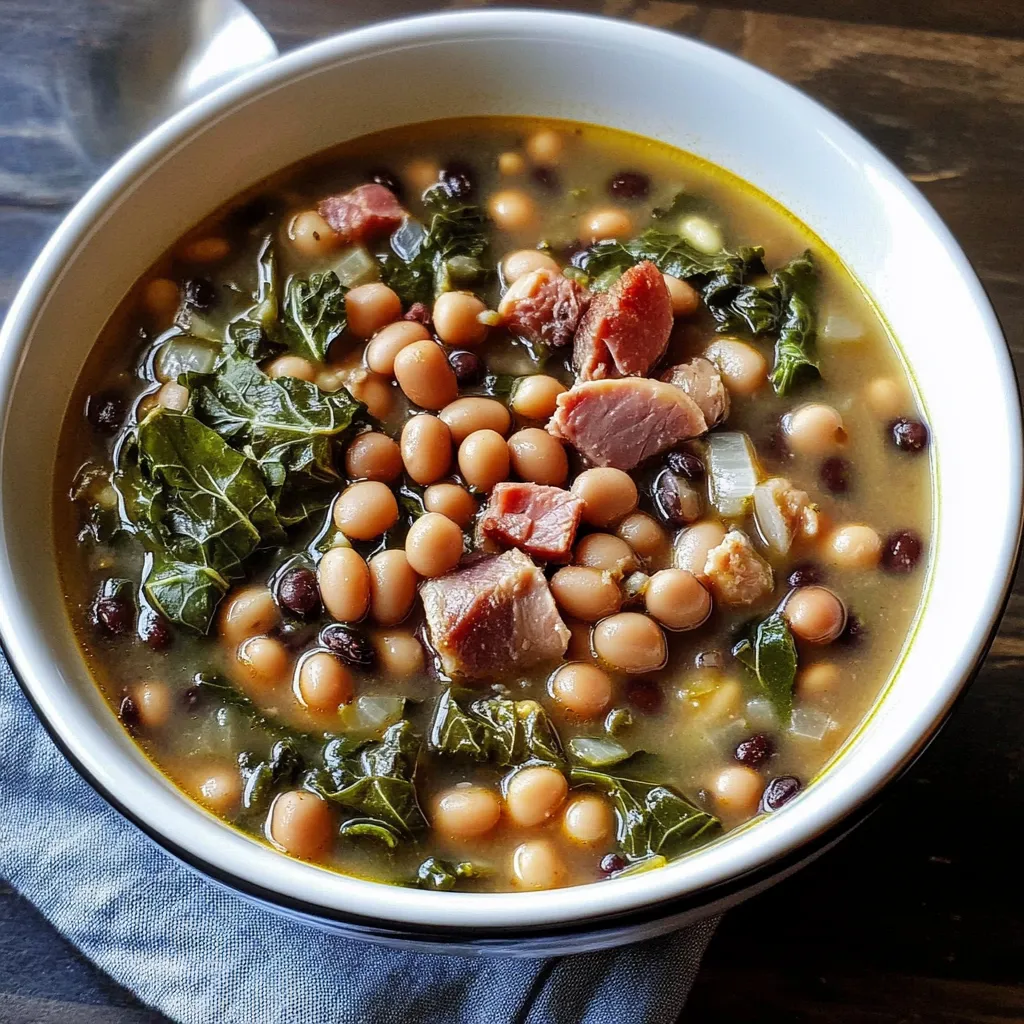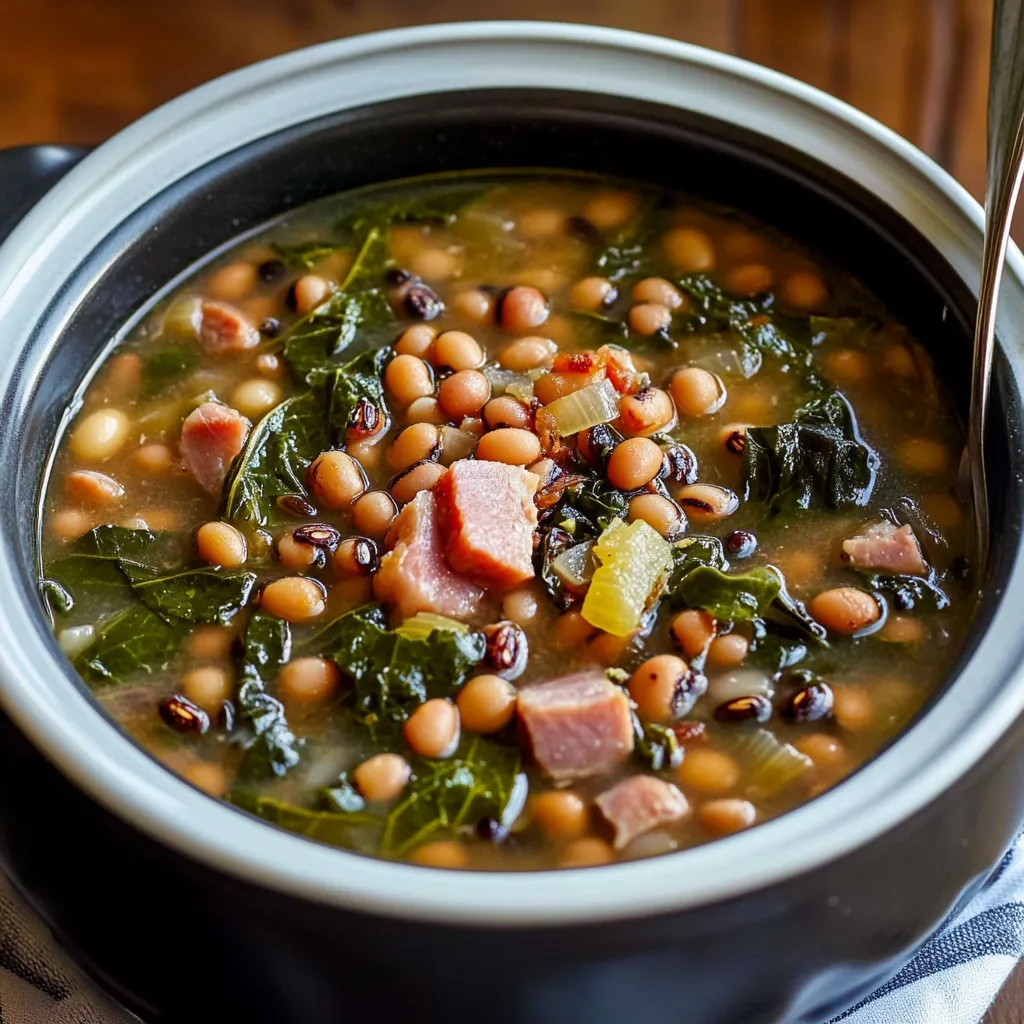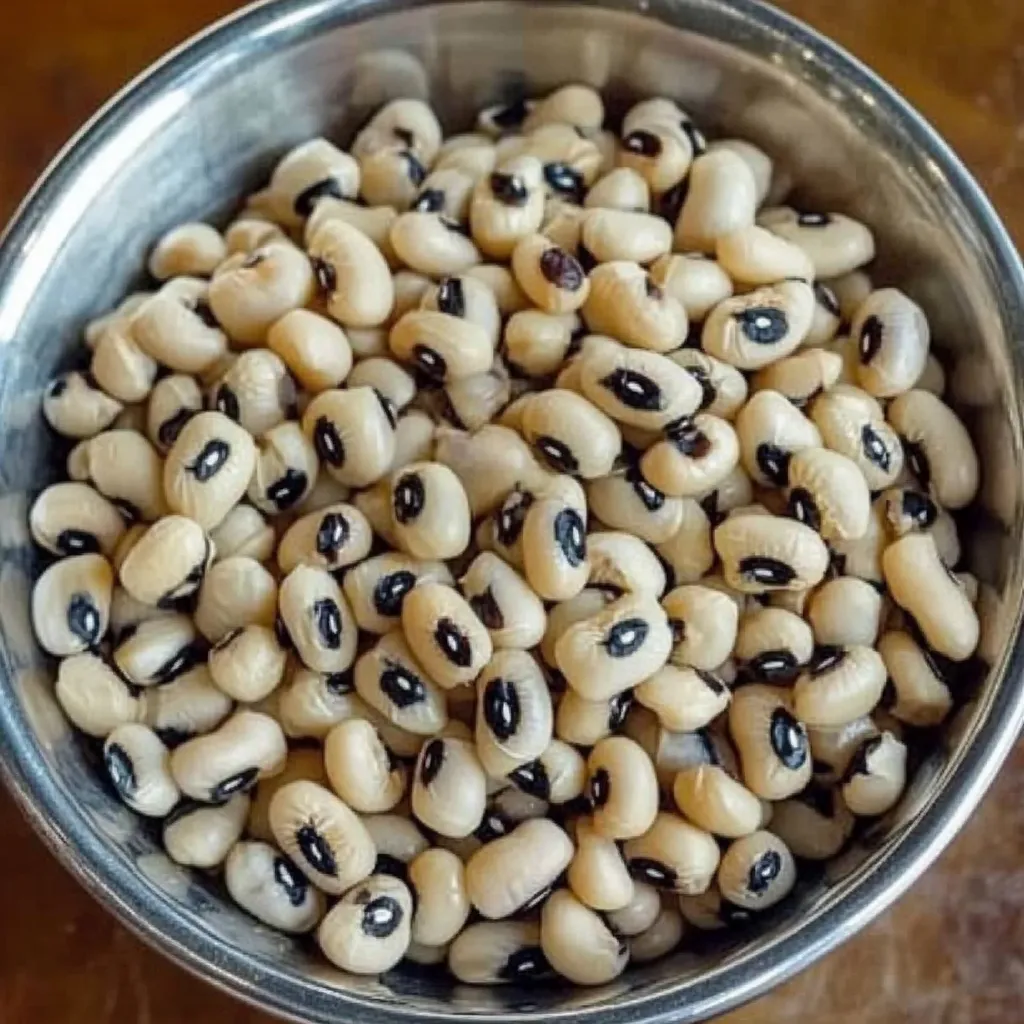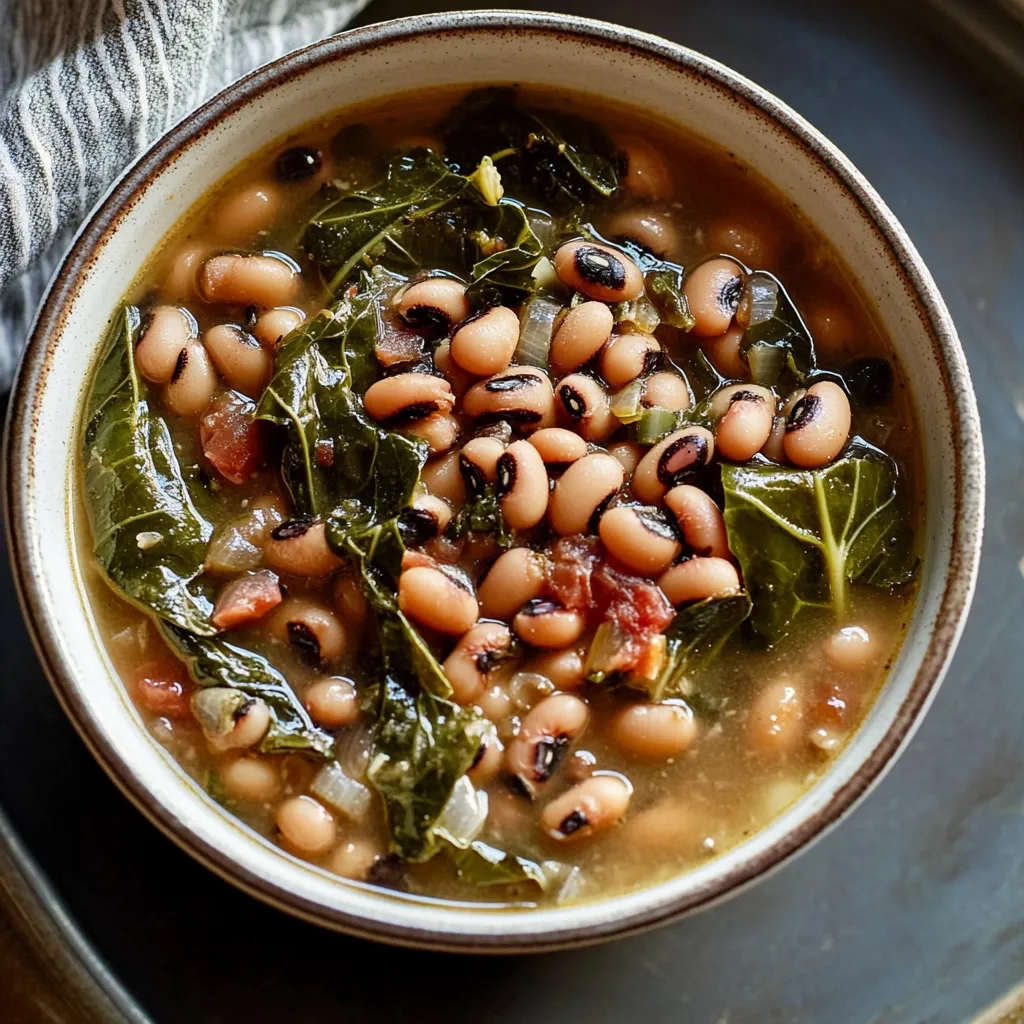 Pin it
Pin it
The warm smell of black eyed peas and collard greens simmering slowly takes me right back to my grandma's cooking space. This crock pot version keeps all the old-school tasty bits but makes things way easier, so it's great for busy folks who still want that real down-home Southern feel.
I found out last winter that when you let the ham bone slowly give up its flavors, you get an even tastier broth than cooking on the stove. The slow, steady warmth seems to pull out every bit of goodness, making each serving better than the one before.
Key Components
- Ham Bone: Pick one that still has plenty of meat on it - this is what gives your dish its deep, rich taste
- Black Eyed Peas: Go for clean, whole dry peas without spots for the best bite and cooking outcome
- Collard Greens: Choose fresh, green leaves with no yellow spots - they'll stay nicely shaped during the long cook time
- Wild Rice: The earthy flavor and slight chewiness works great with the soft peas
- Chicken Stock: Make your own if you can, or buy a good low-salt one so you can control how salty it gets
- Apple Cider Vinegar: A tiny bit makes all the flavors pop and helps soften the greens
- Onion and Garlic: Using fresh ones really changes how good the final dish tastes
 Pin it
Pin it
Step-by-Step Guide
- Getting Ready (15 minutes):
- Look through black eyed peas and throw out any bad ones or little rocks. Wash peas in cold water until water runs clear. Cut off tough collard stems and chop leaves into 2-inch pieces. Cut onion into same-sized pieces and chop garlic very small so the flavor spreads evenly. Put ham bone in the middle of the cooker so it flavors everything properly.
- Creating Layers (10 minutes):
- Set ham bone in the bottom of your crock pot. Scatter chopped onions and garlic around it. Pour chicken stock over everything, making sure it covers stuff by about an inch. Add your spices and tomato sauce. Mix gently without moving the ham bone too much.
- First Cooking Stage (2 hours):
- Add black eyed peas and collard greens. Cover and cook on High until peas start to soften. Don't open the lid if you can help it, as it lets heat escape. Watch liquid levels through the lid if possible.
- Adding Rice (3-4 hours):
- Turn heat down to Low before putting in wild rice. Make sure rice is covered by liquid. Keep cooking until rice is tender but still has some bite. Check now and then so rice doesn't get mushy.
- Finishing Up (30-60 minutes):
- Carefully lift out ham bone with tongs. Pull off any remaining meat while it's still warm. Put shredded meat back in the pot. Let everything hang out on Low heat so flavors can mix together.
Watching my mom make this taught me that you can't rush good food. She always told me, 'Just let the slow cooker do its thing - good food takes time.' After making this for years, I know she was right. Especially that ham bone - it needs hours to give up all its rich, deep flavor.
 Pin it
Pin it
Handling Heat Settings
Getting to know your slow cooker matters a lot. They don't all heat the same way, so the first time you make this, check if the peas are soft after about 90 minutes. If they're still too hard, you'll probably need the full 2 hours on High before switching to Low.
Getting the Right Feel
The secret to perfect texture is having the right amount of liquid for your solids. Your peas should be soft but not falling apart, greens should be tender but not mushy, and wild rice should be chewy without being hard. If needed, add some hot stock while cooking to keep everything at the right consistency.
 Pin it
Pin it
Spice Changes
Flavors get stronger as everything cooks, so go easy with seasonings at first. The ham bone adds a lot of saltiness on its own, and you can always add more spices in the last hour. I've learned to wait until the end to put in any hot stuff like cayenne or hot sauce.
Leftovers Magic
This slow cooker dish actually tastes better after a day or two as all the flavors mix together more. I've found the extras make awesome Southern breakfast bowls with a runny egg on top, or can turn into a hearty soup by adding more broth and some fresh chopped veggies. The wild rice stays nicely chewy even when warmed up again.
Ways to Serve
The old-school way to eat this is in big bowls with cornbread on the side, but I've found it's just as good over grilled polenta or with roasted sweet potatoes. When I have a bunch of people over, I put out toppings like fresh chopped onions, diced tomatoes, different hot sauces, and fresh herbs so everyone can fix their bowl how they like it.
Prep Ahead Tricks
For crazy busy holiday mornings, get everything ready the night before. Keep cut veggies in sealed containers and measure out your spices ahead of time. Morning setup becomes super easy, though I suggest waiting to chop collards until just before cooking so they stay bright green and full of good stuff.
Changing for Special Diets
While ham bone is the traditional way, I've made this for my vegetarian friends using smoked mushrooms and veggie broth with great results. The trick is building up smoky flavors with things like smoked paprika or a tiny bit of liquid smoke. For friends who can't have gluten, make sure to double-check what's in your stock.
Different Ways Across the South
As I've traveled around the South, I've tried so many versions of this dish. In Georgia, some cooks add a little sorghum syrup for sweetness. Louisiana folks often start with the Trinity mix of onion, celery, and bell pepper. Some families in Mississippi swear that adding okra in the last hour makes it perfect.
Tricks From Pro Cooks
Don't throw away those collard stems - chop them up tiny and add them with the onions for extra texture. For more flavor, cook the onions and garlic in a pan before they go in the slow cooker. Try keeping some cooked black eyed peas in your freezer - they warm up great and can make starting this recipe much faster.
This crock pot take on a Southern favorite shows that easier cooking doesn't mean giving up tradition. After years of making this, I've found it's not just about what goes in or how long it cooks - it's about the care and time that goes into making food that brings folks together. Whether you're serving it on New Year's Day or just a regular Sunday dinner, these black eyed peas and collards carry on a tasty tradition while helping you make new memories around your table.
 Pin it
Pin it
